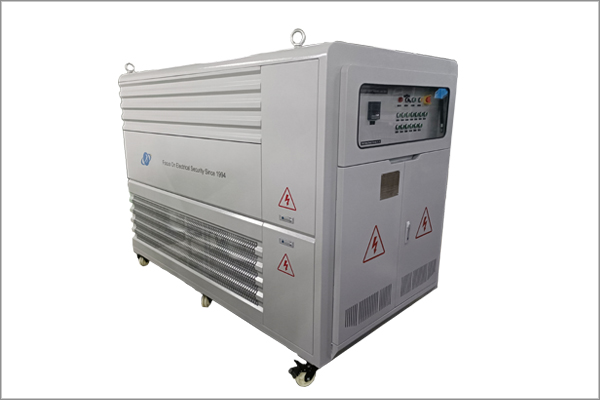Efficient Generator Testing Scheme: Enhancing Equipment Reliability
Time:2025-01-10
In today's rapidly evolving industrial and energy sectors, efficient and reliable generators are crucial equipment for ensuring stable power supply and promoting sustained economic growth. With continuous technological advancements and increasingly complex application demands, the performance requirements for generators have also risen. Therefore, developing a scientific and comprehensive testing scheme for efficient generators is of great significance for enhancing equipment reliability, preventing faults, and extending service life. This article will explore an integrated testing scheme aimed at ensuring generators operate optimally through refined testing methods.
I. Setting Testing Objectives
The primary task of efficient generator testing is to clarify testing objectives, which include but are not limited to:
Performance Verification: Validating key performance indicators such as generator output power, efficiency, and voltage stability to ensure they meet design requirements.
Reliability Assessment: Evaluating generator durability and stability under extreme operating conditions through simulated long-term operation.
Fault Early Warning: Utilizing advanced detection technologies to identify potential fault points, such as winding overheating and insulation aging, in advance.
Energy Efficiency Optimization: Analyzing generator operation data to identify energy consumption bottlenecks and propose improvement measures to enhance overall energy efficiency.
II. Testing Scheme Design
Static Testing
Insulation Resistance Testing: Using a megohmmeter to measure the insulation resistance between generator windings and ground to ensure good insulation performance.
DC Resistance Testing: Detecting the balance of DC resistance in each phase winding to judge whether there are shorts or opens in the windings.
Polarity Check: Confirming the correct polarity of generator windings to avoid reverse-phase operation.
Dynamic Testing
No-Load Operation Testing: Starting the generator under no-load conditions and monitoring its voltage waveform, frequency stability, and harmonic content.
Load Testing: Gradually increasing the load to the rated value, recording generator output power, efficiency, temperature rise, and other parameters to assess its full-load performance.
Sudden Load Change Testing: Simulating sudden changes in grid load to test the generator's dynamic response speed and stability.
Temperature Rise Testing: Operating the generator under rated load for a period of time, measuring the temperature of each component to ensure it does not exceed the allowable range.
Special Testing
Vibration and Noise Testing: Using vibration sensors and noise meters to assess generator vibration levels and noise emissions during operation to ensure compliance with environmental standards.
Insulation Withstand Voltage Testing: Conducting power frequency withstand voltage tests or lightning impulse tests to test the generator insulation system's capacity under extreme conditions.
Remote Monitoring and Diagnostics: Integrating remote monitoring systems to collect generator operation data in real-time, using big data analytics to predict fault trends.
III. Analysis and Optimization of Testing Results
After completing the tests, the collected data must be comprehensively analyzed to identify performance shortcomings and potential risks. Targeted optimization measures, such as adjusting maintenance schedules, replacing aging components, and optimizing control system parameters, should be formulated for identified issues. Simultaneously, a long-term performance monitoring and feedback mechanism should be established to continuously iterate the testing scheme and further enhance generator reliability and energy efficiency.
IV. Conclusion
An efficient generator testing scheme is a crucial link in ensuring reliable equipment operation and improving power supply quality. By implementing the above comprehensive testing scheme, not only can potential generator issues be promptly identified and resolved, but also a solid technical support can be provided for the long-term stable operation of the equipment. In the future, with the application of advanced technologies such as the Internet of Things and artificial intelligence, generator testing and maintenance will become more intelligent and precise, further driving the sustainable development of the energy industry.
News Recommendation
-
 2024-09-11
2024-09-11TRIUMPH LOAD EXHIBITING AT Enlit Europe 2024 -BOOTH 7.H08
-
 2023-04-21
2023-04-21TRIUMPH LOAD EXHIBITING AT DATA CENTER WORLD GERMANY 2023-BOOTH F909
-
 2023-04-06
2023-04-06TRIUMPH LOAD EXHIBITING AT ELECTRIC POWER TECH KOREA 2023 – Booth G109
-
 2022-05-05
2022-05-05What is the role of ac load bank for power supply?
-
 2022-05-05
2022-05-05What is the role of the load bank?


